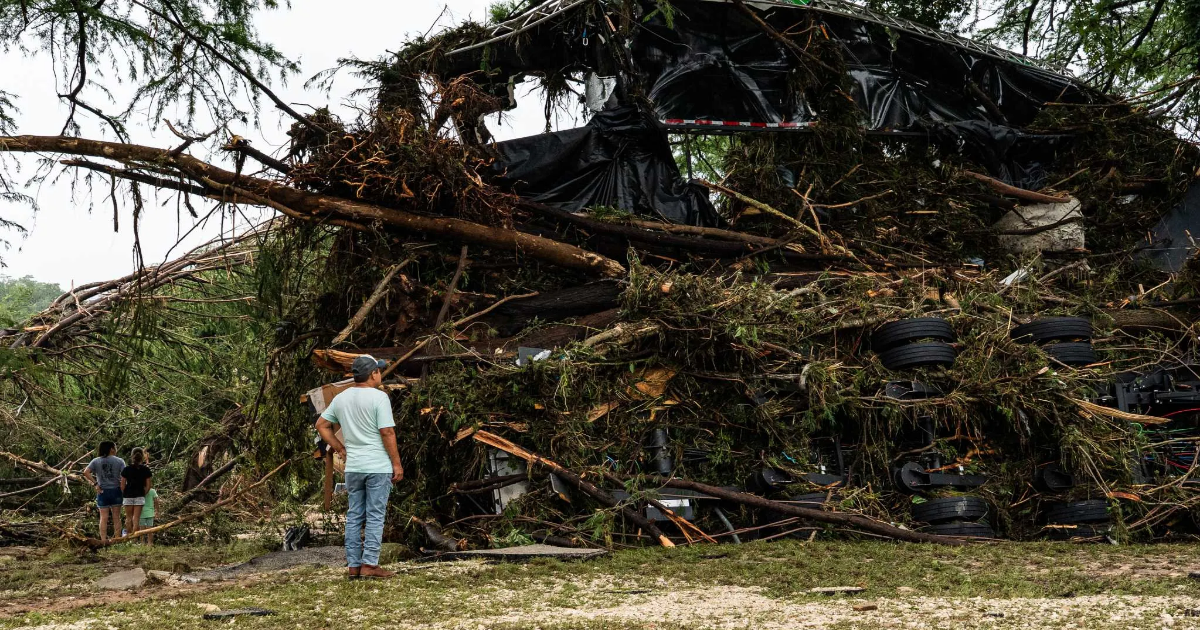
Hundreds of children at summer campsites along the Guadalupe River in Kerr County were at risk early Friday when a catastrophic flash flood killed at least 27 people, a tragedy that has prompted a continued search for a group of missing children from one of the region’s most popular camps.
In the aftermath, questions are focusing on the accuracy of weather forecasting, the area’s flash flood alert system and whether camp staff were properly notified of the danger.
State and local officials in Kerr County say that much of what happened was not in the National Weather Service forecast and that evacuating the campgrounds likely could not have happened fast enough and may have posed more danger.
“Ever since I have been governor, we have had weather events that were completely unpredictable,” Gov. Greg Abbott said in a news conference. “And that is just a part of nature.”
But meteorologists say the official National Weather Service forecast gave ample notice for people to get themselves – and others – out of harm’s way.
Were officials prepared for historic and catastrophic flooding?
State and local officials say nothing could have prepared them for the Guadalupe River to rise as quickly as it did.
Kerrville City Manager Dalton Rice said he went for a run around 3:30 a.m. Friday along the river and felt light rain but saw no signs of danger. Within 90 minutes, he returned to the same area with the city’s fire chief to see that a park area that was the planned site of a city July 4 celebration was under water.
The water had risen about 20 to 25 feet within that hour and a half, he said.
“We almost got stuck,” he said.
Kerr County Judge Rob Kelly also said that the speed and force of the flood were not able to be predicted.
“We didn’t know this flood was coming, rest assured,” he said. “No one knew this kind of flood was coming. This is the most dangerous river valley in the United States. We had no reason to believe this would be anything like what we saw here.”
However, W. Nim Kidd, chief of the Texas Division of Emergency Management, said state leaders began alerting local officials Thursday about the potential for flash flooding.
As a precaution, the state mobilized boat response teams from San Antonio and Austin to the area to position them for a potential emergency response, Kidd said.
“Everybody got the forecast from the National Weather Service,” he said. “It did not predict the amount of rain we saw.”
He and other state officials said forecasts placed the rainfall projections at up to eight inches.
What had the National Weather Service predicted?
Forecasters in the Austin-New Braunfels National Weather Service office issued a flash flood watch at 1:18 p.m. Thursday, said Troy Kimmel, an Austin-based meteorologist and former lecturer at the University of Texas who specializes in meteorological emergency management.
The watch bulletin said “you should monitor later forecasts and be alert for possible flood warnings. Those living in areas prone to flooding should be prepared to take action should flooding develop.”
In the overnight hours, rain settled in Kerr County.
“The sky fell,” Kimmel said. “It was still the middle of the night, but that does not mean people should not be monitoring.”
Flash flood warnings for parts of the Hill Country began at 11:41 p.m. Thursday. The warning for central Kerr County was issued at 1:14 a.m. Friday and remained valid until 4:15 a.m.
“Life-threatening flash flooding of creeks, streams, urban areas, highways, streets and underpasses,” it warned.
Kimmel acknowledged that predicted rainfall totals fell short of what happened, but “at the same time the watches and warnings were there.”
Kimmel concluded, “the weather service did its job. As a user and partner of those people, they know I will criticize them, but I am not going to do that at this point. To say this is something they did not expect, that tells me their emergency plan did not work.”
What are the evacuation plans for the numerous camps along the Guadalupe River?
State and local officials have not directly addressed whether camps along the Guadalupe River had evacuation plans, but experts, including Kimmel, say it is likely that camps along the river had emergency management systems in place.
He said that if they did not, he would find that shocking.
“If there is a camp anywhere in this country that doesn’t have an emergency operations plan, they are negligent,” he said. “That’s all I can say.”
Dalton Rice, the Kerrville city manager, said emergency responders and others must often balance launching an evacuation with potentially putting people on dangerous, flooded roads. He said doing so can create “mass panic.”
“The evacuation period is a very delicate balance,” Rice said. “Do you evacuate and put chaos on the road and potentially risk people getting stuck on the road?”
Asked why the camps along the river were not evacuated, Kerr County Judge Ron Kelly said in a news conference Friday: “I can’t answer that. I don’t know.”
